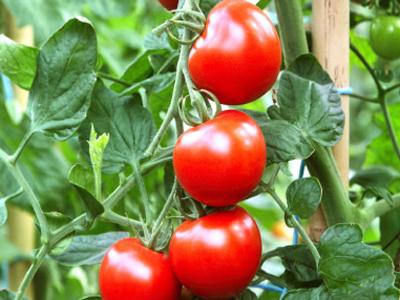 Greenhouse cultivation - painstaking business. Humidity is usually greatly increased in the greenhouse, it is necessary that tomatoes constantly have access to water, but it is increased humidity that causes plants to be attacked by various diseases. Also in the daytime, the sun begins to warm up, and in the evening it gets cooler, which means that the temperature in the greenhouse cannot stay at the same level, so it can freeze at night and overheat during the day, which also negatively affects plants. Therefore, it is worth considering carefully how to properly care for plants in such conditions, and which tomatoes for a polycarbonate greenhouse (grade) would be better to purchase.
Greenhouse cultivation - painstaking business. Humidity is usually greatly increased in the greenhouse, it is necessary that tomatoes constantly have access to water, but it is increased humidity that causes plants to be attacked by various diseases. Also in the daytime, the sun begins to warm up, and in the evening it gets cooler, which means that the temperature in the greenhouse cannot stay at the same level, so it can freeze at night and overheat during the day, which also negatively affects plants. Therefore, it is worth considering carefully how to properly care for plants in such conditions, and which tomatoes for a polycarbonate greenhouse (grade) would be better to purchase.
How to prepare a greenhouse for seedlings?
In fact, growing tomatoes in a greenhouse is not an easy task, before planting plants in a greenhouse, you will have to properly prepare the entire room so that the seedlings feel comfortable there and nothing prevents it from growing normally. All work with the greenhouse should be completed before the first days of spring. For example, not every greenhouse has the ability to heat, so the sun is used as a natural heater, when it starts to warm, the earth absorbs heat and retains it for a long time. That is why the greenhouse should be located as far as possible from the trees and shady areas of the garden, the greenhouse should be constantly lit by the sun.
To grow tomatoes for the greenhouse from polycarbonate (low-growing varieties), it is also necessary to prepare the soil so that the tomatoes can get everything necessary for growth and development from the earth in the greenhouse. It is very important that the soil is fertile, if the earth is clay, it is best to add a small amount of sawdust and high-quality humus to it.
Also, the soil may contain too much excess peat, and to make the soil favorable for growing plants, sawdust is added to the ground, a little turf and humus again, if you wish, you can add ordinary sand to this list. To get good beds, they are harvested in advance, at least seven days must pass before planting. Each bed can have a meter wide, and if in the greenhouse you can create not one but several beds, then between them there must be half a meter of free space.
Creating beds for tomatoes for a polycarbonate greenhouse (varieties for the Urals, etc.) is far from all the preparation. Wells are also made and a bucket of special manganese solution is poured into each of them to make it, one bucket of water is poured, that is, ten liters, and one gram of potassium permanganate is bred into them.
The right choice of varieties
To get a more profitable indicator of tomato productivity, it is worth learning about which tomatoes for a greenhouse made of polycarbonate (varieties) are the best and how to grow them correctly, as well as which tomato diseases in the greenhouse you are expected If you can buy tomatoes of hybrid varieties, then you should certainly do it. The fact is that it is hybrids that best show their productivity when grown in polycarbonate greenhouses. They perfectly fight various diseases that can attack the plant, are quite unpretentious in their care, are not afraid of temperature changes. Such tomato varieties will be able to bear fruit even if their habitat becomes unfavorable for growth.
If you want to get a really good crop from one bush by growing tomatoes in greenhouse conditions, then you should buy tomatoes that do not limit their growth.Such types of tomatoes perfectly grow and develop, which leads to high productivity, but those plants that form only one stem should not be planted in a polycarbonate greenhouse. In order for the bush to form eight more additional stems, gardeners will have to plant the first tomato sprouts in greenhouse soil at least at the very beginning of May. Although in May it is still not too warm, this time is different in that it can be quite hot during the day, but at night the temperature drops very much. Such temperature changes strongly affect plant seedlings. If, during this period, those types of tomatoes that have limited growth are planted in a polycarbonate greenhouse, then they will give only three branches.
Those varieties of tomatoes, which do not limit the growth of the stem, have their own good advantages, if you plant tomatoes for the greenhouse from polycarbonate (varieties in the photo) in greenhouse conditions, then the first fruits can be harvested in the shortest possible time. In addition, such tomatoes will bring a very rich harvest, since from 10 to 30 fruits can be located on one brush, it all depends on the plant variety and the weight of each of the tomatoes. One bush can bring a gardener from ten to twenty kilograms of tomatoes. There are also such varieties of tomatoes, where not eight brushes are formed on the stem, but as many as fourteen, respectively, and the fruiting of such a bush will be quite good. Each fruit will be ready to be eaten or pickled for the winter before the onset of the first frost, and after all, frost can destroy even almost ripened fruits.
Proper seed preparation for planting in greenhouse conditions
To get a really good crop, you will need to prepare all the available tomato seeds for planting in a special polycarbonate greenhouse. It is worth noting that such preparation will also take some time, as you will have to take several actions that will improve the quality of seeds and help eliminate bad ones.
To begin with, all seeds need to be hardened, this procedure is carried out with absolutely any kind of tomato, for this tomato seeds are placed in a small bag of cloth or bandage and dipped in a manganese solution. To prepare such a solution, you need to pour one gram of potassium permanganate into one large spoon of water, the procedure is carried out for twenty minutes, after which the seeds can be removed. As soon as the seeds withstand this procedure, they are carefully removed and washed well with plain, clean water of cool temperature. After this, it is already possible to make a nutritious mixture of water and nitrophosphate for the seeds, in one liter of water just a teaspoon of this substance is stirred, the seeds are again placed in the already prepared solution and left in the place where it is always warm.
As soon as the seeds are in the necessary amount of time, they are taken out, and then placed in any container with clean water and left for one day. After that, the workpieces are removed from the water and immediately placed in the refrigerator for forty-eight hours. It is very important to monitor the amount of moisture in the seeds, when quenching it should be enough, otherwise all seeds will dry out. After two days, the seeds are removed from the refrigerator and immediately planted in the ground. Only in this case the tomatoes for the polycarbonate greenhouse (the varieties are very different), the cultivation of which is not a simple matter, will turn out to be strong and healthy.
Recommended: Better tomato varieties for 2016.
The best varieties of tomatoes that are planted in polycarbonate greenhouses
Grade "Honey Drop"
It is this variety of tomatoes for the polycarbonate greenhouse that contains a lot of sugar in its composition, so the tomatoes taste a little sweet.The fruits of the plant are not too large, they can grow only thirty grams in weight, it is best to start planting the seeds of this type of tomato in the month of March. To seedlings turned resistant, the temperature of the air during its cultivation should not fall below twenty degrees and above twenty-five.
Seedlings are planted in greenhouses already in the last days of May, while a distance of half a meter must be left between each plant. “Honey Drop” is a fairly unpretentious variety, as it easily tolerates climate change, it is worth paying attention to these very tomatoes for the greenhouse from polycarbonate (grade) for Siberia, they can endure small frosts. It is worth noting that this type of plant does not like the lack of moisture, so you will have to constantly water and eliminate weeds if you want to get a really high-quality and large crop. If there is time, then periodically special fertilizers are added to the soil to feed the plants. Already in the early days of September, you can start collecting delicious and beautiful tomatoes.
Variety tomato "Samara"
These are precisely those tomatoes that are not planted in open ground, their cultivation is possible only on condition that the seedlings will grow in a polycarbonate greenhouse. Such plants can produce several branches, on each of which several fruits are located, from four to fourteen brushes can be located on one bush. Ripe fruits are gaining a fairly large mass and, accordingly, are large in size, in addition, their taste is very soft and pleasant, which allows you to eat vegetables in food, do not preserve it. Sowing seeds of this variety is recommended only at the beginning of March, it is ideal for growing tomatoes for a polycarbonate greenhouse in Siberia. The first seedlings can be planted in greenhouse soil in just a month and a half, it is best to do this at the very end of April.
Every fruit of it varieties can reach a weight of about ninety grams, tomatoes are necessarily illuminated additionally, as there is not enough natural light in April. It is this variety that should be used for spinning tomatoes in general for the winter period.
Variety "Moneymaker"
This variety is one of the most popular, especially often used by summer residents who grow vegetables on their site. The variety is considered annual, the plant is very colorful and has a very interesting name. The first seeds can be sown in the first days of March, but sprouts can be transferred to the greenhouse only after warming, which means that planting begins only in the last days of May.
It is worth noting that this variety gives the first ripe fruits quickly enough, just a month and a half after planting, you can take off your first tomato crop. The bush grows a height of one and a half meters, there are also such plants whose bush reaches a height of 180 centimeters. Four to seven brushes can form on one bush, and up to fifteen ripe and large fruits will grow on each of the brushes. Each fruit can reach a weight of not more than one hundred grams, while the plant is not susceptible to attack by harmful insects and diseases, the fruits can have a bright scarlet or light red color.
Recommended:The best undersized varieties of tomatoes for open ground.
Grade "Long Keeper"
This type of tomato ripens quickly enough, already at the end of the second summer month it will be possible to get the first juicy fruits of tomatoes. The bush of this plant for the entire growth period reaches at least half a meter in height, and for the entire season from one such bush it will be possible to collect about four kilograms of the crop.
Such tomatoes can be planted exclusively in greenhouse conditions, while the greenhouse itself must be made of polycarbonate. "Long keeper" does not tolerate the lack of normal moisture, so it will often have to be watered, the lack of moisture can lead to a complete loss of yield from the bush.Since the bush has a high trunk, it will have to be tied up in time and create support for it to grow. If gardeners want to know more about tomatoes for a greenhouse made of polycarbonate varieties, a forum of professional gardeners will help make the right choice of tomato varieties for a greenhouse made of polycarbonate (varieties).

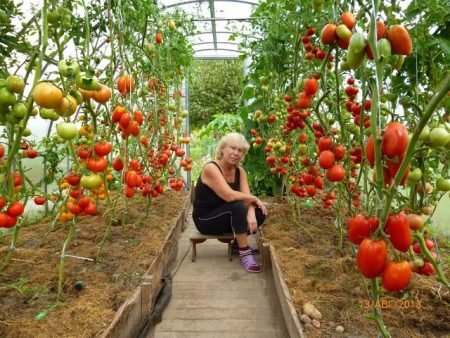
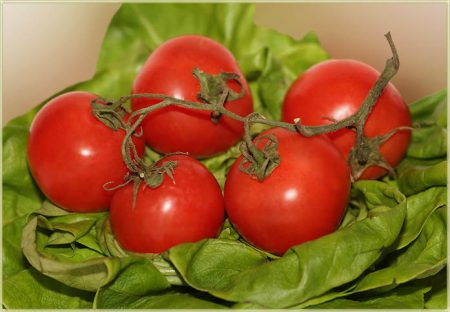
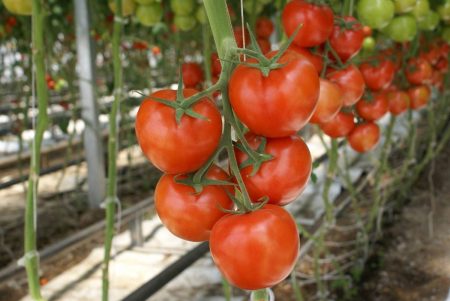
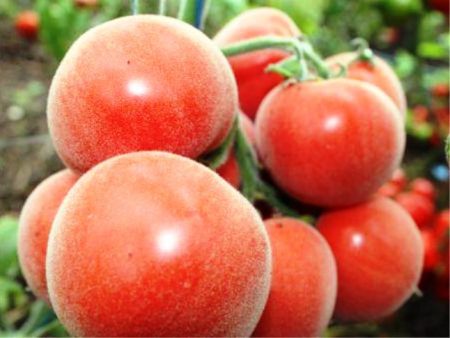



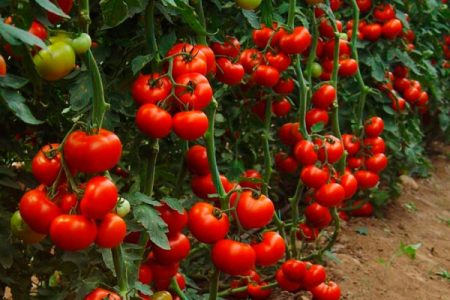
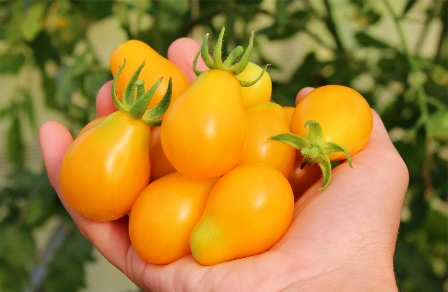
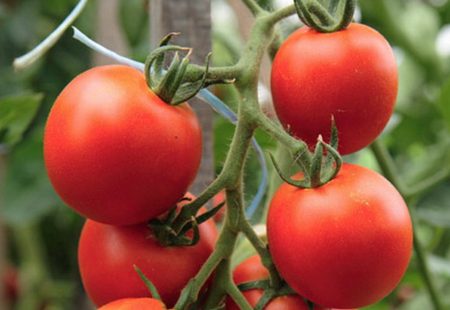
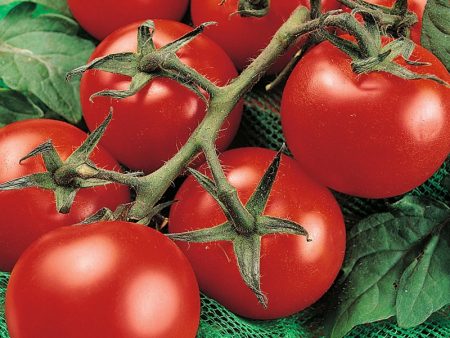
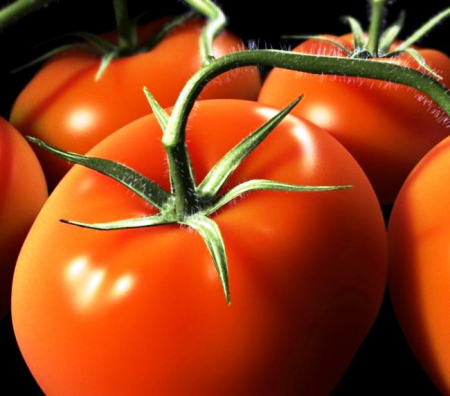
 Low-growing tomatoes, without pinching: 5 of the most delicious varieties
Low-growing tomatoes, without pinching: 5 of the most delicious varieties Why tomato seedlings grow poorly
Why tomato seedlings grow poorly We grow a tomato in a shell
We grow a tomato in a shell Growing tomatoes without watering according to the method of Kazarin
Growing tomatoes without watering according to the method of Kazarin
Sofia
Yes, in order to grow tomatoes in polycarbonate greenhouses, it takes a lot of effort. The first year after the purchase of the greenhouse was not very successful. I bought undersized varieties for protected ground. She fed according to all the rules, watered and stepsoned. As a result, my tomatoes wandered under the roof, and there were very few fruits. Moreover, almost all of them were “eaten” by late blight. They managed to save quite a bit. Taught by bitter experience, now I buy only late blight resistant varieties. All comes with experience. This year I want to plant only tall, probably a bull’s heart. Do not tell me how they grow in polycarbonate greenhouses?